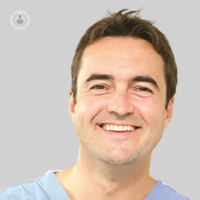You don't have to lump it: All about bunion surgery
Written in association with:Do you need bunion surgery? It offers relief from the pain and remove the lump that’s developed. We speak to leading consultant orthopaedic surgeon Mr Andrew Skyrme all about what’s involved in bunion removal surgery in this informative article.

What is a bunion?
A bunion is a protuberance from the inside of the great toe. Patients see it as a large lump on the inside of the great toe, which they've often had for some years. This causes other problems in turn, such as crowding, hammering and sometimes crossover of the lesser toes.
What causes bunions?
It's generally caused by:
- Ill-fitting, narrow shoes and;
- Genetics.
How is it treated?
The primary pathology of bunions needs to be examined. This is that the first metatarsal and the second metatarsal diverge. As this happens, it leads to protuberance of the great toe. Surgery involves reducing that divergence, which involves breaking and re-straightening the big toe, and fixing it with small screws.
What's the most effective surgical option for bunion removal?
SCARF is the best technique and most widely-done surgery done by foot and ankle surgeons in the UK. The operation is a day-case procedure and afterwards, the patient is in bandages for six weeks. We check the wounds in week one, two and six.
What's involved in recovery for bunion removal?
If it's needed after six weeks, physiotherapy is organised to aid recovery and enhance a more normal walking gait.
If you're looking for expert bunion surgery in Crowborough, Brighton, Eastbourne or Seaford, arrange a consultation with Mr Skyrme via his Top Doctors profile.



